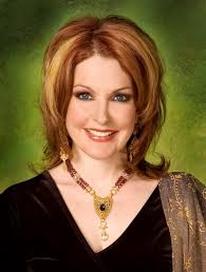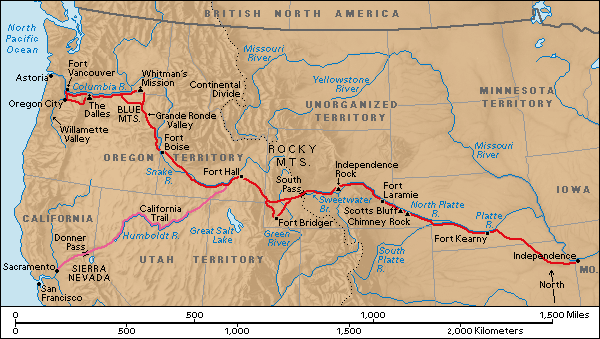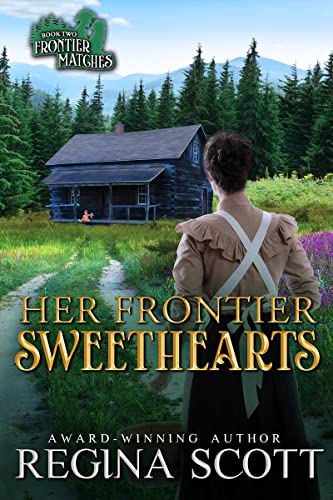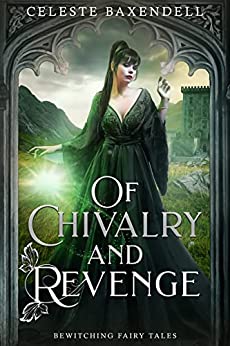Prairie Song
by Mona Hodgson
Since Anna and several of the other ladies that join the Boone's Lick Company wagon train
are members of a quilting group, we are going to feature Quilting for today's post.
History
The process of quilting uses a needle and thread to join two or more layers of material to make a quilt. Typical quilting is done with 3 layers: the top fabric or quilt top, batting or insulating material and backing material. The quilter's hand or sewing machine passes the needle and thread through all layers and then brings the needle back up. The process is repeated across the entire area where quilting is wanted. A rocking, straight or running stitch is commonly used and these stitches can be purely functional or decorative and elaborate. Quilting is done to create bed spreads, art quilt wall hangings, clothing, and a variety of textile products. Quilting can make a project thick, or with dense quilting, can raise one area so that another stands out.
In American Colonial times, most women were busy spinning, weaving, and making clothing. Meanwhile, women of the wealthier classes prided themselves on their fine quilting of wholecloth quilts with fine needlework. Quilts made during the early 19th century were not constructed of pieced blocks but were instead whole cloth quilts. Broderie perse quilts and medallion quilts were made. Some antique quilts made in North America have worn-out blankets or older quilts as the internal batting layer, quilted between new layers of fabric and thereby extending the usefulness of old material.
During American pioneer days, "paper" quilting became popular. Paper was used as a pattern and each individual piece of cut fabric was basted around the paper pattern. Paper was a scarce commodity in the early American west, and women would save letters from home, newspaper clippings, and catalogs to use as patterns. The paper not only served as a pattern but as an insulator. The paper found between the old quilts has become a primary source of information about pioneer life.
Quilts made without any insulation or batting were referred to as summer quilts. They were not made for warmth, only to keep the chill off during cooler summer evenings.
Pieced Pinwheel pattern Pieced quilts are often made in a theme of colors. Quilters will often embroider their name, the person receiving the quilt, and the date. | Applique Bears Applique quilts often tell a story. Quilts often have intricate embroidery and quilting designs. This one includes family pets and child's toys. |
Pattern
To make a full size quilt version you would need to alternate the block below with a solid (light color) block of the same size. The instructions below are for a throw pillow using this block only.
4 squares *
4 rectangles **
1 square ***
Using ¼" seam allowance
Stitch pieces together in strips
Stitch the strips together
Press seams as you go
Use a single piece of fabric as the back and stitch the front to the back on three sides.
Add fiber-fill or loose batting or a pre-made pillow.
Hand-stitch the top closed.
Notes:
I made a large throw pillow so the measurements I used for the pieces were
* squares 5 ½" x 5 ½"
** rectangles 11" x 5 ½"
*** square 11" x 11"
total size for the top 21" x 21"
During the five-month journey, trail hand Caleb Reger plans to keep a low profile as he watches over the band of travelers. Guarding secrets about his past and avoiding God’s calling on his life, Caleb wants to steer as far from Anna as she does him, but she proves to be just as he assessed her from the beginning— independent, beautiful trouble.
Led by a pillar of hope, the group faces rough terrain that begins to take a toll on their spirits. Will the wilderness of suffering lead them astray, or will the gentle song of love that echoes across the prairie turn their hearts toward God’s grace and the promise of a new home?
.
| PRINT . | KINDLE . | PRINT . | PRINT . |
and
find more fun and fascinating things from wagon train days gone by.
Website
Facebook Author Page































 RSS Feed
RSS Feed













































































































